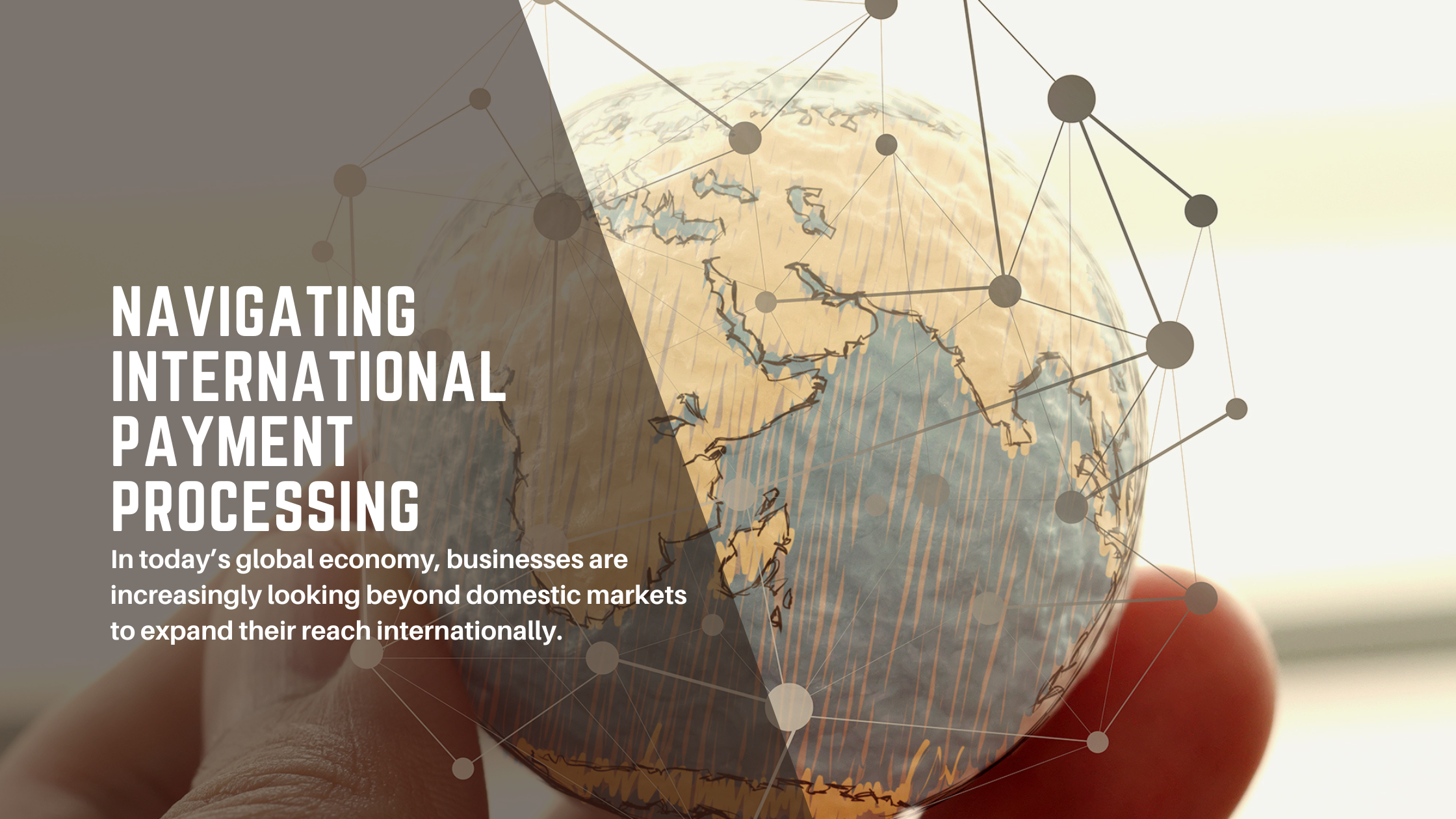
Navigating International Payment Processing
In today’s global economy, businesses are increasingly looking beyond domestic markets to expand their reach internationally. Processing payments globally, however, can present a unique set of challenges. In this blog post, we’ll provide tips and solutions to help your business navigate international payment processing effectively.
Why International Payment Processing Matters
1. Access to a Larger Market
Processing payments globally opens doors to new markets and a larger customer base. By accepting international payments, you can tap into diverse revenue streams and grow your business beyond local borders.
2. Increase Sales and Revenue
Offering international payment options can boost sales by catering to customers who prefer to pay in their local currencies. It also reduces friction at the checkout stage, leading to higher conversion rates.
3. Enhance Customer Experience
Providing seamless payment options in various currencies and payment methods enhances the overall customer experience, increasing customer satisfaction and loyalty.
Tips for Effective International Payment Processing
1. Choose a Reliable Payment Processor
Selecting a payment processor that supports international transactions is crucial. Look for processors with:
- Global Reach: Ensure the processor can handle transactions in the countries where you plan to do business.
- Multi-Currency Support: The ability to process payments in various currencies helps you avoid conversion fees and provides a better experience for international customers.
- Competitive Fees: Compare fees associated with international transactions, including currency conversion fees and cross-border fees.
2. Offer Multiple Payment Methods
Different regions have preferred payment methods. To cater to a global audience, offer a variety of payment options such as:
- Credit and Debit Cards: Widely accepted worldwide.
- Digital Wallets: Popular in many countries (e.g., PayPal, Apple Pay, Google Pay).
- Bank Transfers: Common in certain regions, especially in Europe and Asia.
- Local Payment Methods: Consider integrating region-specific payment methods like Alipay in China or SEPA Direct Debit in Europe.
3. Implement Currency Conversion
Enable currency conversion at the checkout to allow customers to see prices and make payments in their local currency. This transparency helps reduce cart abandonment and improves customer satisfaction.
4. Ensure Compliance with Local Regulations
Each country has its own regulations regarding payment processing, including data protection laws and tax regulations. Make sure to:
- Understand Local Laws: Research the legal requirements in each country where you plan to operate.
- Adhere to PCI DSS Standards: Ensure that your payment processing system complies with the Payment Card Industry Data Security Standard (PCI DSS) to protect customer data.
- Manage Taxation: Be aware of VAT or other sales tax obligations in different regions.
5. Optimize Payment Security
Security is a top priority in international payment processing. Implement measures such as:
- Fraud Detection Tools: Use advanced fraud detection systems to monitor transactions for suspicious activities.
- Encryption: Ensure that your payment gateway uses SSL/TLS encryption to protect sensitive data during transmission.
- 3D Secure Authentication: Employ 3D Secure (such as Verified by Visa or MasterCard SecureCode) to add an additional layer of authentication.
6. Provide Customer Support
Offering excellent customer support is essential for resolving issues that may arise during international transactions. Provide:
- Multilingual Support: Assist customers in their preferred language to improve communication and resolve issues quickly.
- Multiple Contact Channels: Offer various support channels such as email, live chat, and phone support.
7. Monitor and Analyze Payment Data
Regularly review payment data to identify trends, monitor transaction volumes, and assess performance. Use analytics to:
- Track Conversion Rates: Measure how well your international payment options are performing.
- Identify Problem Areas: Spot issues related to payment processing, such as high decline rates or transaction errors.
- Adjust Strategies: Make data-driven decisions to optimize your payment processing strategies.
Solutions for International Payment Processing
1. Global Payment Gateways
Consider using a global payment gateway that supports multiple currencies and payment methods. These gateways offer a unified solution for processing payments worldwide, reducing complexity and streamlining operations.
2. Local Acquiring Banks
Partner with local acquiring banks in key markets to enhance transaction processing and reduce fees. Local banks can offer better rates and improve transaction approval rates.
3. Payment Aggregators
Payment aggregators allow you to process payments through a single platform, simplifying the management of multiple payment methods and currencies. They often provide integrated fraud protection and reporting tools.
Conclusion
Navigating international payment processing requires careful planning and strategic implementation. By choosing the right payment processor, offering multiple payment methods, ensuring compliance with local regulations, optimizing security, and providing excellent customer support, you can successfully expand your business globally.
At Merchant Connect, we offer comprehensive payment solutions designed to support international transactions and help you thrive in the global marketplace. Contact us today to learn how we can assist you with seamless and secure international payment processing.
